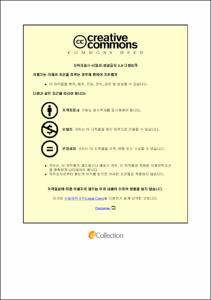지속 가능한 안전문화 정착을 위한 사업장 및 관계기관의 역할 연구
- Abstract
- Recently, the government, public institutions, academia, private institutions, and workplaces have made a lot of efforts to reduce industrial accidents, such as enacting and revising related laws, law enforcement and administrative support, accident prevention techniques, technical guidance, and industrial accident prevention activities. Nevertheless, indicators related to the occurrence of domestic industrial accidents are stagnating or rather increasing.
In the past, it was possible to prevent industrial accidents by installing protective devices, but recent trends suggest that there are limitations in the past safety management methods. It is necessary to supplement safety devices, change work procedures, and train workers getting out of prevention measures focused on change of facilities
In addition, even if risk factors through safety inspections are properly improved, there are many cases in which industrial accidents occurred due to workers dismantling protective devices and omitting work procedures during the work process. Therefore, in order to prevent industrial accidents, it is essential to faithfully perform safety tasks at each class, such as employers, supervisors, safety managers, and workers, and establish a safety culture at workplaces by continuously maintaining safety management activities.
In this study, prior research analysis and survey were conducted to derive problems and improvement measures for the roles of supervisor, safety managers and specialized safety management agency to play a important role in the safety management of the workplace. And the following conclusions were drawn.
First, the smaller the size of the workplace, the more safety management activities were limited to simply improving facilities or work methods, and the effectiveness of the current safety management activities was found to be low because the condition has not been maintained after improvement in many cases. Therefore, it was confirmed that there are many improvements to the safety management activities carried out at the current workplace.
Second, the supervisor had a low perception that the safety management task was its original task. It was confirmed that the smaller the workplace, the lower the awareness of compliance with the law, such as not faithfully performing safety management activities stipulated in the Occupational Safety and Health Act. Therefore, the supervisor should be supported to faithfully perform safety management activities through education and training, role and responsibility, safety-related information provision, task reduction, and task support.
Third, according to the results of the survey, safety managers had a very high perception rate of safety management task. However, despite of a high perception rate, it was confirmed that the safety manager could neglect the safety manager's original work while performing the management supervisor's work in addition to its original work. In order to improve this, it is important to ensure that safety managers perform their own tasks through appropriate division of duties, and to create conditions for safety managers at each workplace to faithfully perform through reduction of safety management tasks, empowerment, and budget support.
Fourth, in case of specialized safety management agency, it was found that most of the entrusted workplaces had less than 4 hours of technical guidance per month, and due to the lack of competence and expertise of the technical guidance staff, the role of the safety manager was very insufficient. As an improvement measure, specialized safety management agency need to improve the quality of technical guidance through policy and institutional support such as increasing the number and time of technical guidance, guaranteeing minimum technical guidance fees, and establishing a system to limit excessive competition among agencies.
- Issued Date
- 2022
- Awarded Date
- 2022. 8
- Type
- Dissertation
- Publisher
- 부경대학교
- Affiliation
- 부경대학교 산업대학원
- Department
- 산업대학원 안전공학과
- Advisor
- 장성록
- Table Of Contents
- 1. 서론 1
1.1 연구의 배경 및 필요성 1
1.2 연구 목적 5
2. 이론적 배경 6
2.1 안전문화의 개념 6
2.2 안전문화와 관리자의 역할 9
2.3 산업안전보건법상 관리감독자 및 안전관리자 12
3. 연구방법 18
3.1 연구 대상 18
3.2 설문 조사 19
4. 설문 조사 결과 24
4.1 설문 조사 현황 24
4.2 설문 조사 분석 25
5. 연구 결과 73
5.1 사업장의 안전관리 방식 73
5.2 관리감독자의 역할 77
5.3 안전관리자의 역할 82
5.4 안전관리전문기관의 역할 86
6. 결론 90
참고문헌 93
부록 95
- Degree
- Master
- Files in This Item:
-
-
Download
 지속 가능한 안전문화 정착을 위한 사업장 및 관계기관의 역할 연구.pdf
기타 데이터 / 2.47 MB / Adobe PDF
지속 가능한 안전문화 정착을 위한 사업장 및 관계기관의 역할 연구.pdf
기타 데이터 / 2.47 MB / Adobe PDF
-
Items in Repository are protected by copyright, with all rights reserved, unless otherwise indicated.